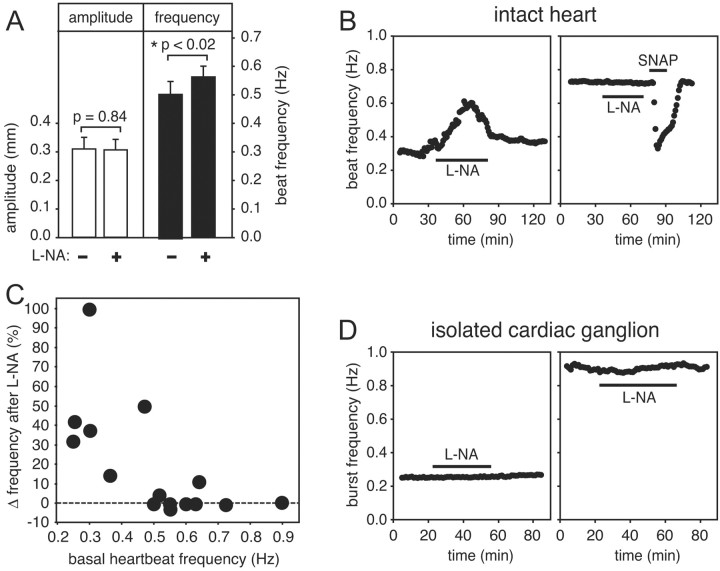Figure 13.
l-NA affects the beat frequency of the intact heart when the basal heart rate is low, but does not affect the burst frequency of the isolated cardiac ganglion. A, Heartbeat amplitude (white bars) and heartbeat frequency (black bars) from 16 independent hearts, measured either just before (–) or after 30 min continuous application (+) of 300 μm l-NA (means ± SE). B, Heartbeat frequencies plotted as a function of time before, during (black bar), and after washout of 300 μm l-NA for two representative intact preparations, one of which had a basal heart rate of ∼0.3 Hz (left) and the other of ∼0.73 Hz (right). The slower heart sped up in response to l-NA, whereas the faster heart did not. The faster heart was also exposed to 10–5 m SNAP immediately after exposure to the l-NA, as indicated. The robust response to SNAP indicates that the preparation was not desensitized to NO. Data were smoothed using a moving bin average with a bin size of 1 min. C, l-NA-induced change in heart rate (percentage change from the basal rate), plotted as a function of basal frequency. Each data point is from an independent experiment. D, Instantaneous burst frequencies plotted as a function of time before, during (black bar), and after washout of 300 μm l-NA for two representative isolated cardiac ganglia, one of which had a basal burst rate of ∼0.25 Hz (left) and the other of ∼0.95 Hz (right). Neither preparation responded to l-NA. Data were smoothed using a moving bin average with a bin size of 1 min.

